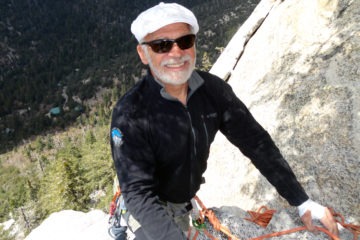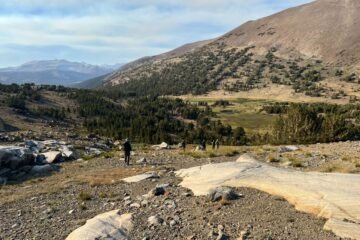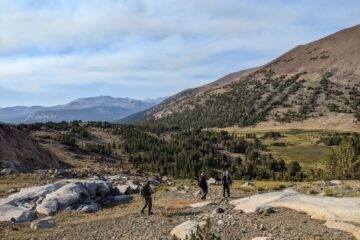Since moving to the Yosemite area in the late 1970s, Shirley Spencer has helped thousands of people connect with the park by sharing her passion for the natural world during day hikes, snowshoe trips, art workshops and more. In addition to leading many of the Conservancy’s Outdoor Adventure programs, Shirley is a talented musician, athlete, artist and author. She has written and illustrated two Conservancy-published books (Living Among Giants: Botanical Treasures of a Sequoia Grove and Flowering Shrubs of Yosemite and the Sierra Nevada), as well as the Our National Parks Alphabet Book, and is co-author (with her husband Mark) of Southern Yosemite Rock Climbs. In this guest post, Shirley offers a glimpse into an intriguing winter world.
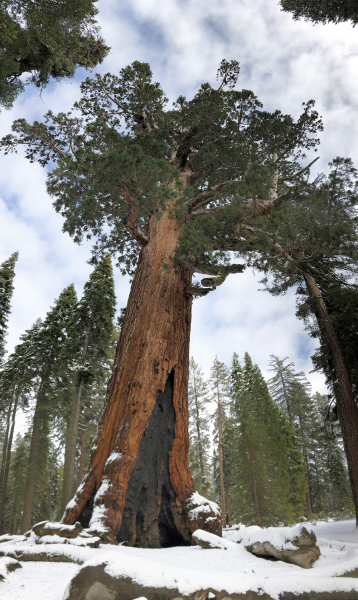 As daylight shortens and shadows lengthen, temperatures drop and the flora and fauna of Yosemite adjust to the rhythm of winter. Along with mugs of hot cocoa around a roaring fire, this is a wonderful time of quiet beauty to get out and enjoy the interesting adaptations of winter life. In southern Yosemite, the Mariposa Grove is a superb place to explore and observe biological intricacies that make survival possible for life during this quieting season.
As daylight shortens and shadows lengthen, temperatures drop and the flora and fauna of Yosemite adjust to the rhythm of winter. Along with mugs of hot cocoa around a roaring fire, this is a wonderful time of quiet beauty to get out and enjoy the interesting adaptations of winter life. In southern Yosemite, the Mariposa Grove is a superb place to explore and observe biological intricacies that make survival possible for life during this quieting season.
Skeletal branches of deciduous trees and shrubs in winter allow for unobstructed views of neighboring lofty evergreens: pines, cedars, firs and sequoias. Shorter day length and dropping temperatures trigger conifers to boost the sugar content of the liquids in their vascular systems to stave off the possibility of cellular freezing and ensure survival by lowering the freezing temperature of moist tree tissue.
As botanical growth slows in winter, the cells that are produced in the sapwood of the tree are smaller and densely packed together, appearing darker. The following summer, when daylight is abundant with warmer temperatures, the cells produced are much larger, and hence appear lighter in color. In dendrochronology, the study of tree rings, one thin line of dark tissue thus represents the slower winter growth and the lighter colored tissue represents the lush summer growth. One complete year of growth includes one larger pale summer ring and the adjoining darker thin winter band.
California black oaks, which are generally found in sunny and drier locations within a sequoia grove, don’t lose all their leaves. Some brittle, tan-colored oak leaves can hang tenaciously onto twigs, rustling late into the spring season. This interesting aspect of the local deciduous black oak is referred to as marcescence.
Wild ginger, with its deep green, fleshy leaves, survives under the snowpack, sprawling near prone logs to use the extra protection and insulation that fallen tree trunks provide. Scouring rush, commonly called horsetail, is upright and winter-hardy plant that clusters in and around moist riparian areas throughout the snowy landscape. (In the image above, you can see horsetail growing in the foreground, near the base of the sequoias.)
Neon green wolf lichen grows robustly on the furrowed bark of many evergreen trees in winter. Relative snow depth can be deduced by viewing the height at which the wolf lichen grows on tree trunks. Deep winter snow depths discourage the growth of this lichen on the lower portion of tree trunks.
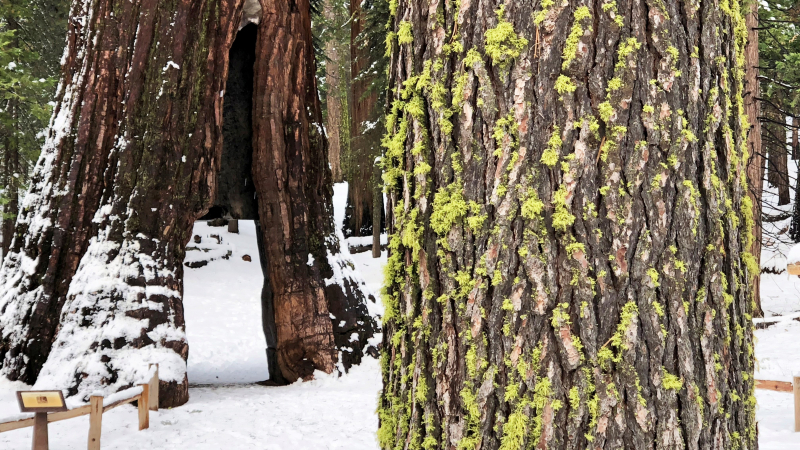
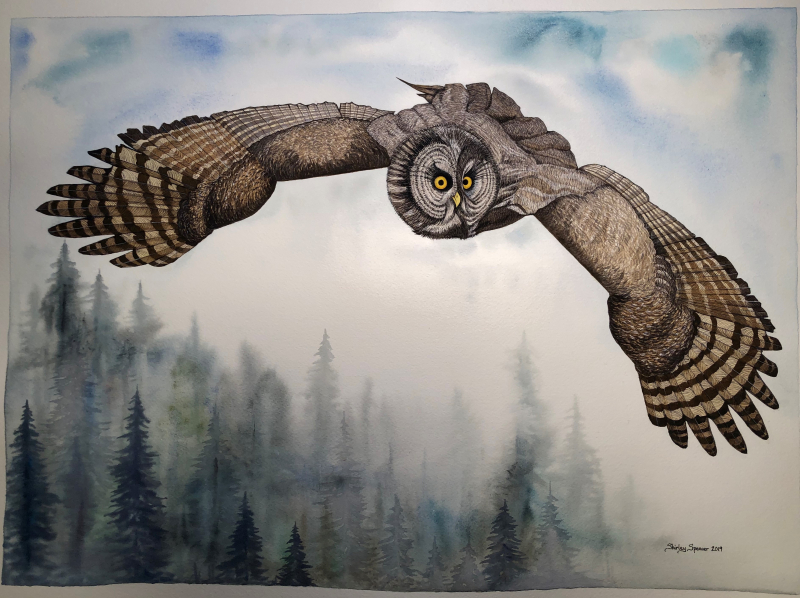 While exploring Mariposa Grove, look for some of the ways wild animals cope with winter. One strategy is migration: Leave the area for a more suitable location if one has long enough legs or wings to facilitate the departure. Another method is hibernation: Consume enormous amounts of food during the autumn months to allow steady metabolization of abundant stored fat. Insects take yet another approach: They ensure the survival of their species by encapsulating their pupae, chrysalis or future offspring until more suitable conditions arrive.
While exploring Mariposa Grove, look for some of the ways wild animals cope with winter. One strategy is migration: Leave the area for a more suitable location if one has long enough legs or wings to facilitate the departure. Another method is hibernation: Consume enormous amounts of food during the autumn months to allow steady metabolization of abundant stored fat. Insects take yet another approach: They ensure the survival of their species by encapsulating their pupae, chrysalis or future offspring until more suitable conditions arrive.
Some animals remain active during the winter months by living in the subnivean space, the zone under and around the insulating and protective snowpack, where they rely on previously gathered and stored summer food. Resident predatory animals hunt above and below the snowpack to fulfill their caloric needs, sometimes seeking sustenance in the subnivean zone. 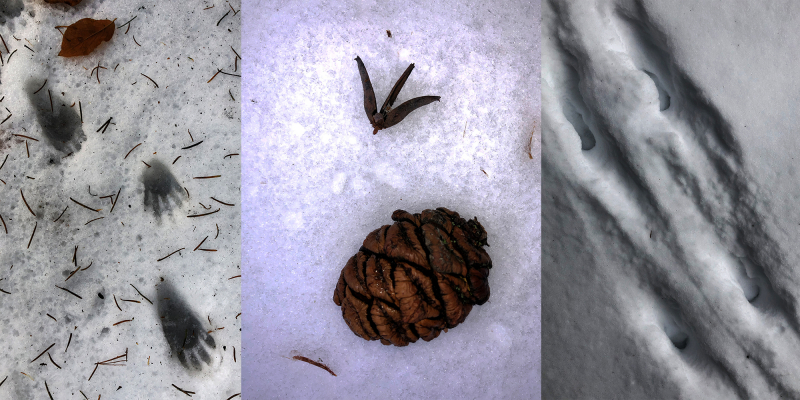
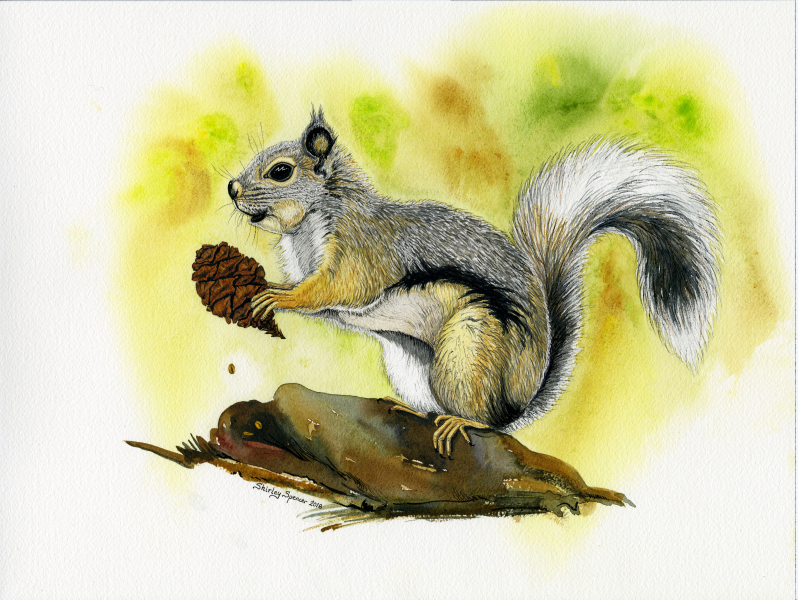 The Douglas squirrel, fondly known as the chickaree, is physically and vocally active in sequoia groves throughout winter. Melting snow provides a reliable water source, and a supply of cached evergreen cones allows the chickaree to survive the challenges that winter presents. The Douglas squirrel aids in the dispersal of sequoia seeds by chewing apart the cones and leaving large midden piles of cone scales mounded at the base of evergreens. In contrast, the Lodgepole chipmunk is largely absent from view during the coldest months; instead, it relies on previously stored foodstuffs and enjoys the protection of an insulating blanket of spun snow.
The Douglas squirrel, fondly known as the chickaree, is physically and vocally active in sequoia groves throughout winter. Melting snow provides a reliable water source, and a supply of cached evergreen cones allows the chickaree to survive the challenges that winter presents. The Douglas squirrel aids in the dispersal of sequoia seeds by chewing apart the cones and leaving large midden piles of cone scales mounded at the base of evergreens. In contrast, the Lodgepole chipmunk is largely absent from view during the coldest months; instead, it relies on previously stored foodstuffs and enjoys the protection of an insulating blanket of spun snow.
When early winter sunsets curtain the western horizon, moist atmospheric conditions may reward the outdoor enthusiast with skies and clouds streaked with vivid colors of pink, orange and violet. Take some time this winter to experience the beauty and serenity of a hallowed landscape among antiquity with giant sequoias as companions.
We hope you have a chance to experience winter in Yosemite, and in Mariposa Grove … maybe even with Shirley, on an Outdoor Adventure (check our calendar to see upcoming programs: yosemite.org/outdoor-adventures). And even more than that, we hope that Shirley’s words will inspire you to slow down and take note of plants and animals living their lives — of pine cones and paw prints, of dripping sap and seedlings searching for sunlight — no matter where your wanders take you.
All photos by Shirley Spencer (December 2018). Above: Horsetail and giant sequoias growing side by side in Mariposa Grove.

